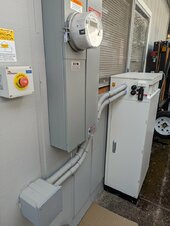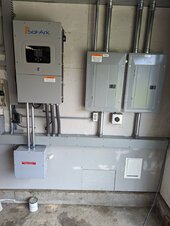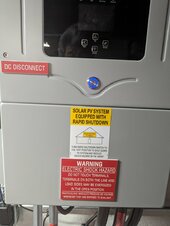Ampster
Renewable Energy Hobbyist
The next day the batteries charged from solar and now that my overnight loads are only 500 Watts I am only down to about 55% by morning. That means I get back to 100% easily by Noon on these clear days. I checked my PG&E site and for the last week or ten days I have barely used the grid. That means my goal of reducing my Non Bypassable Charges for at least the Spring, Summer and Fall may be able to be accomplished.
The only thing that may change that will be if I can't charge my EVs from excess solar and have to use the grid overnight. Even then the $0.025 in NBCs above my lowest overnight rate is still much more convenient and less expensive than buying gas. Shameless plug for EV ownership.
The only thing that may change that will be if I can't charge my EVs from excess solar and have to use the grid overnight. Even then the $0.025 in NBCs above my lowest overnight rate is still much more convenient and less expensive than buying gas. Shameless plug for EV ownership.
Last edited:





